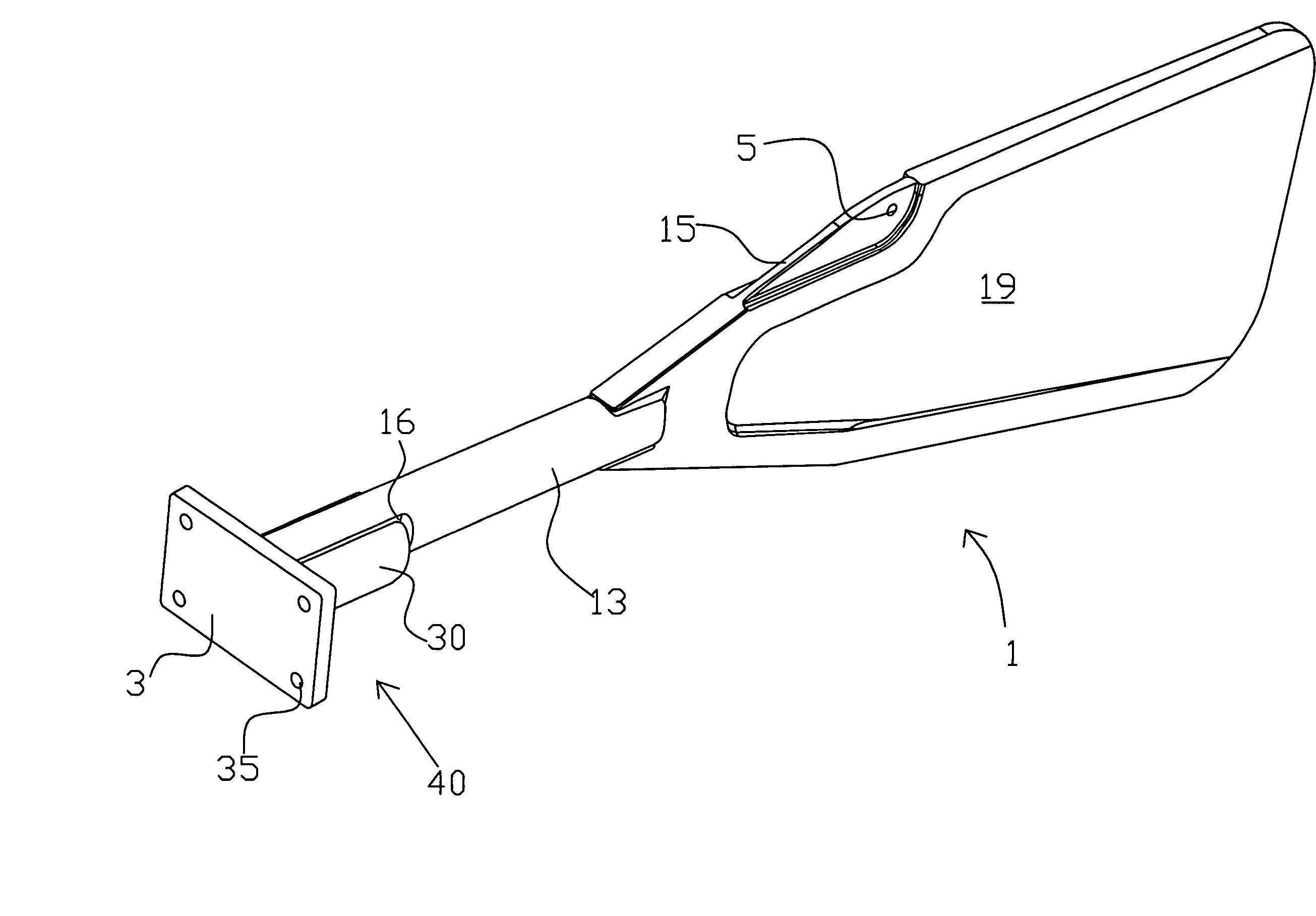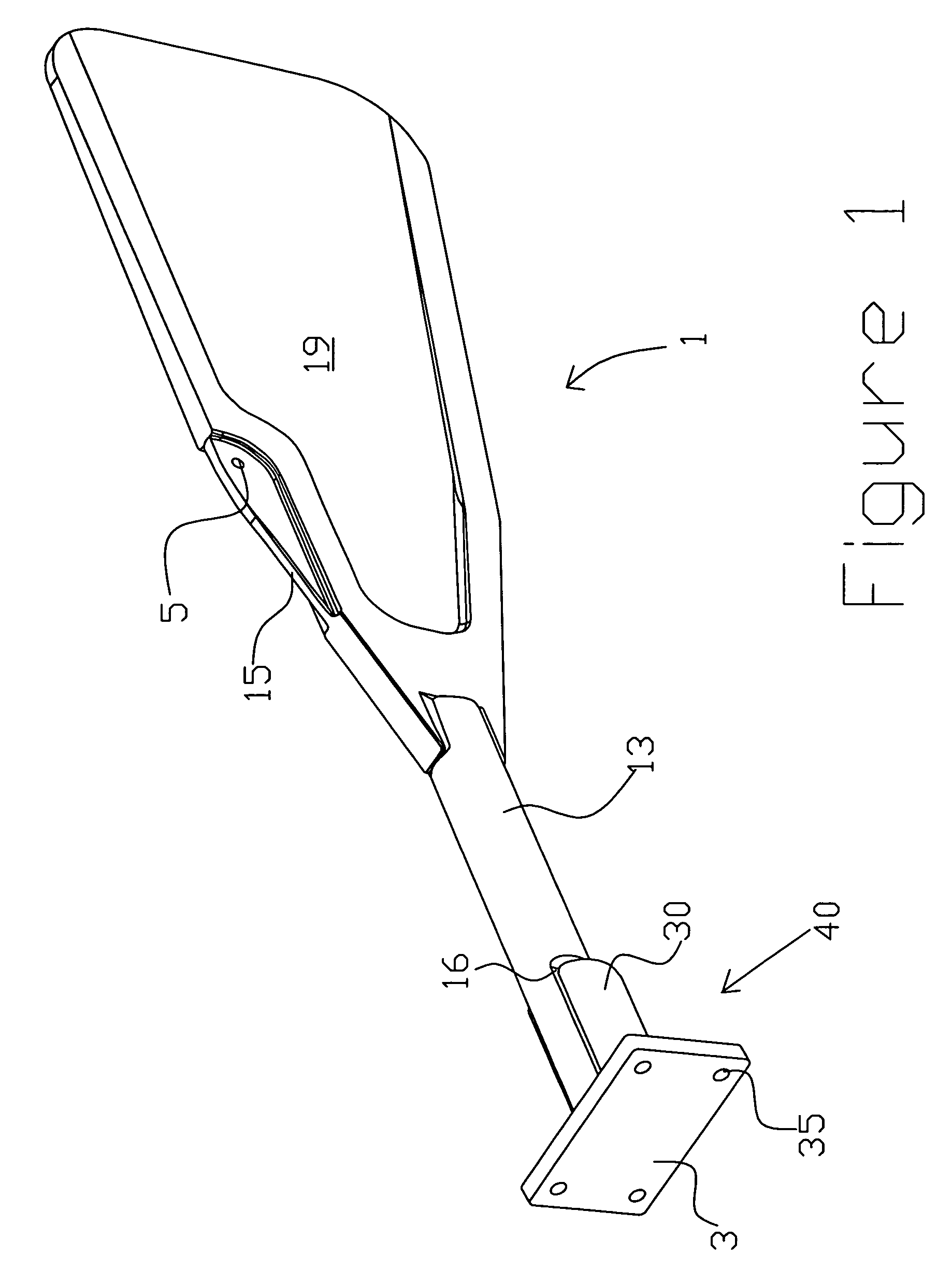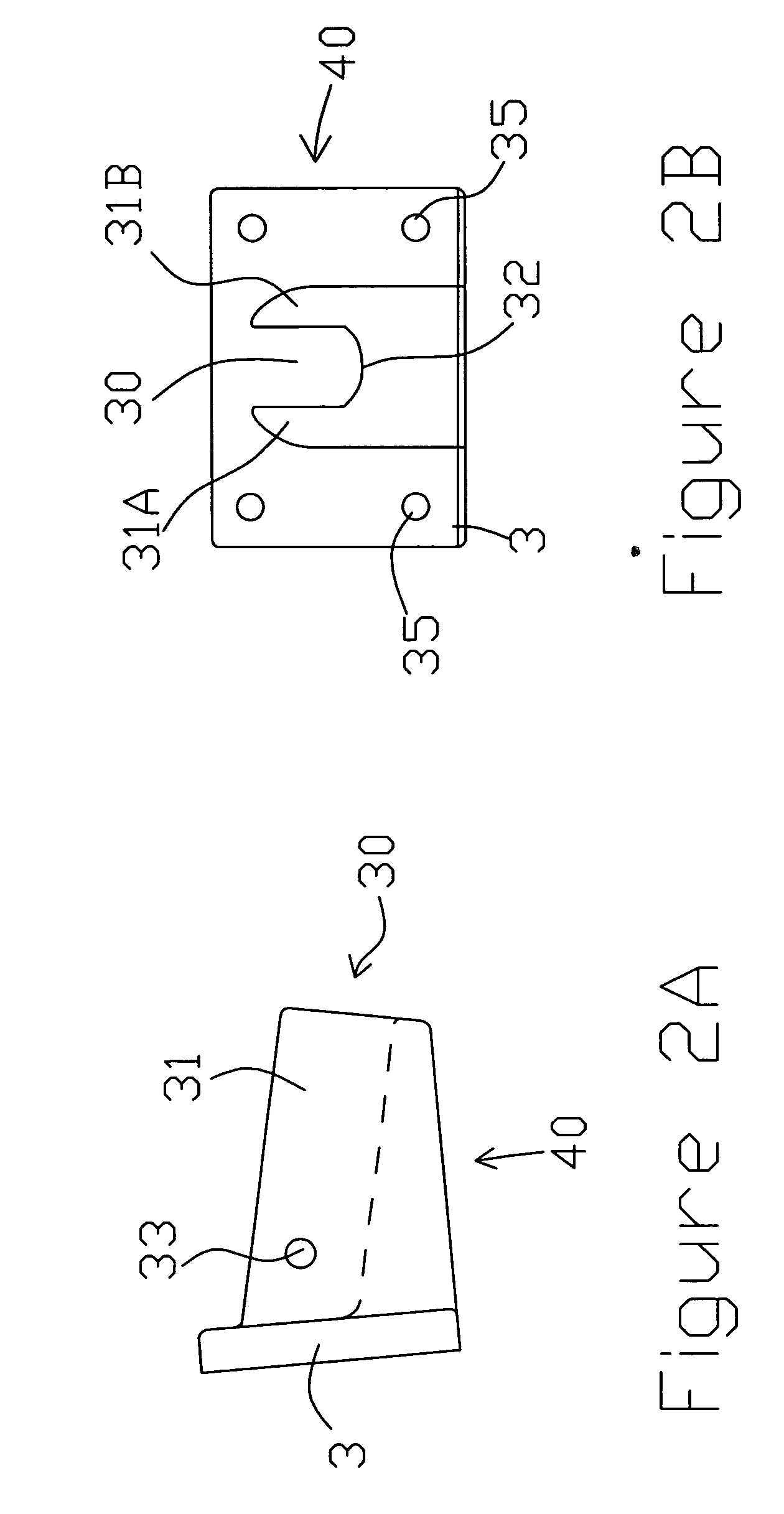Watercraft stabilizing device
a technology for stabilizing devices and watercraft, which is applied in the direction of special-purpose vessels, vessel construction, and vessel movement reduction by foils, etc. it can solve the problems of either solution not being effective, vehicle susceptible to the effects, and vehicle to drift either away, so as to achieve the effect of adding lateral stability to the boat and being easy to install and remove from the boa
- Summary
- Abstract
- Description
- Claims
- Application Information
AI Technical Summary
Benefits of technology
Problems solved by technology
Method used
Image
Examples
Embodiment Construction
[0028]The following is the preferred embodiment or best mode for carrying out the invention. It should be noted that this invention is not limited by the discussion of the preferred embodiment and should only be defined by the appended claims.
[0029]FIG. 1 is a perspective view of the watercraft stabilizing device 1 of the present invention. The device 1 comprises a mounting device that includes a mounting plate 3 that includes a plurality of mounting holes 35 for passing fasteners such as screws therethrough to fasten the device to a watercraft, preferably a hull of a boat. Trough 30 is integrally formed with the mounting plate 3 in a downward fashion as more clearly shown in FIG. 2A and 2B.
[0030]A first end of handle 13 rests in trough 30. Preferably, handle 13 is generally cylindrical in shape with a cut-out regions 16 more clearly shown in FIG. 3A. Integrally formed at an opposite end of handle 13 is blade 19 more clearly shown in FIGS. 3A and 3B. A thin grip 15 includes a hole 5...
PUM
 Login to View More
Login to View More Abstract
Description
Claims
Application Information
 Login to View More
Login to View More - R&D
- Intellectual Property
- Life Sciences
- Materials
- Tech Scout
- Unparalleled Data Quality
- Higher Quality Content
- 60% Fewer Hallucinations
Browse by: Latest US Patents, China's latest patents, Technical Efficacy Thesaurus, Application Domain, Technology Topic, Popular Technical Reports.
© 2025 PatSnap. All rights reserved.Legal|Privacy policy|Modern Slavery Act Transparency Statement|Sitemap|About US| Contact US: help@patsnap.com



